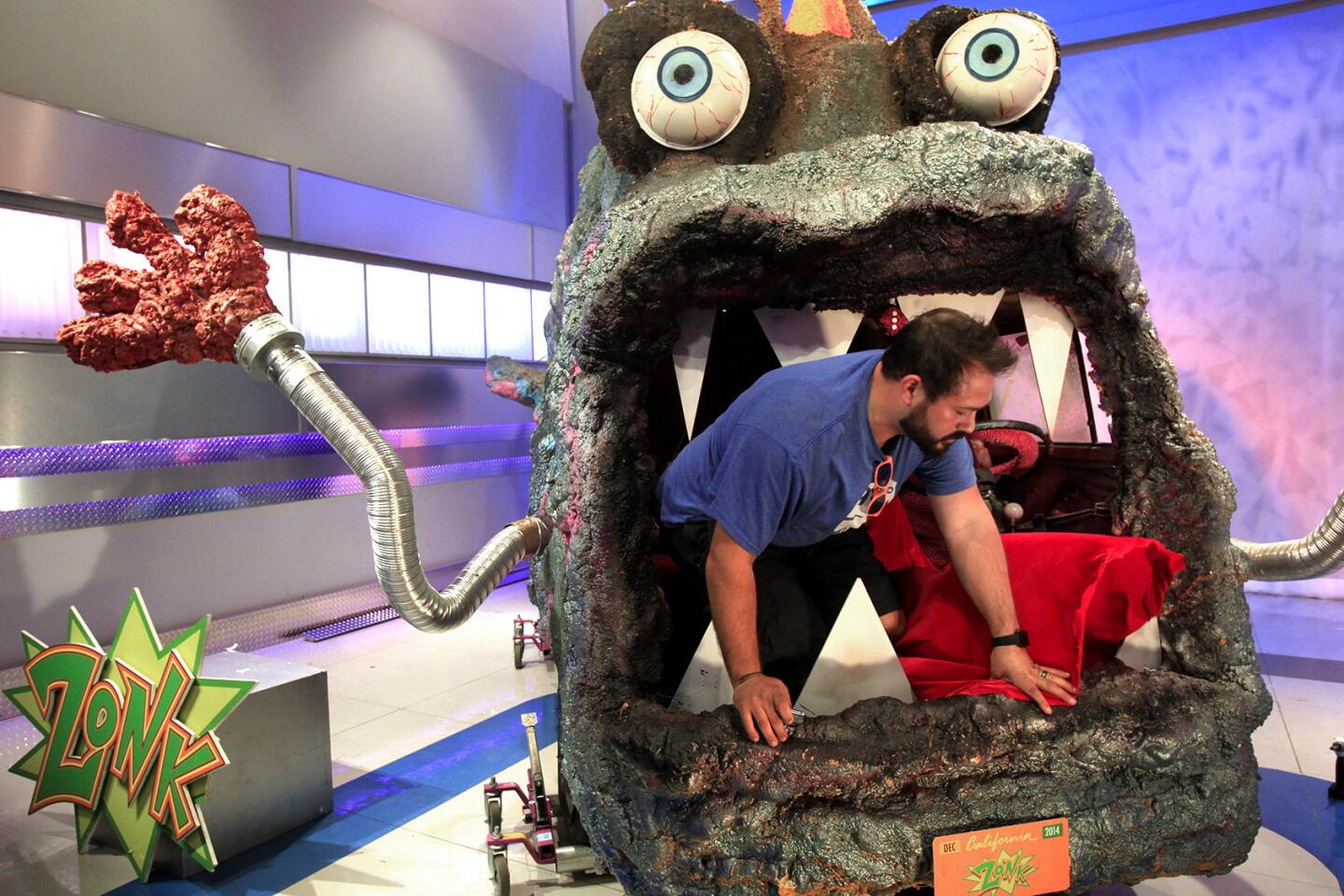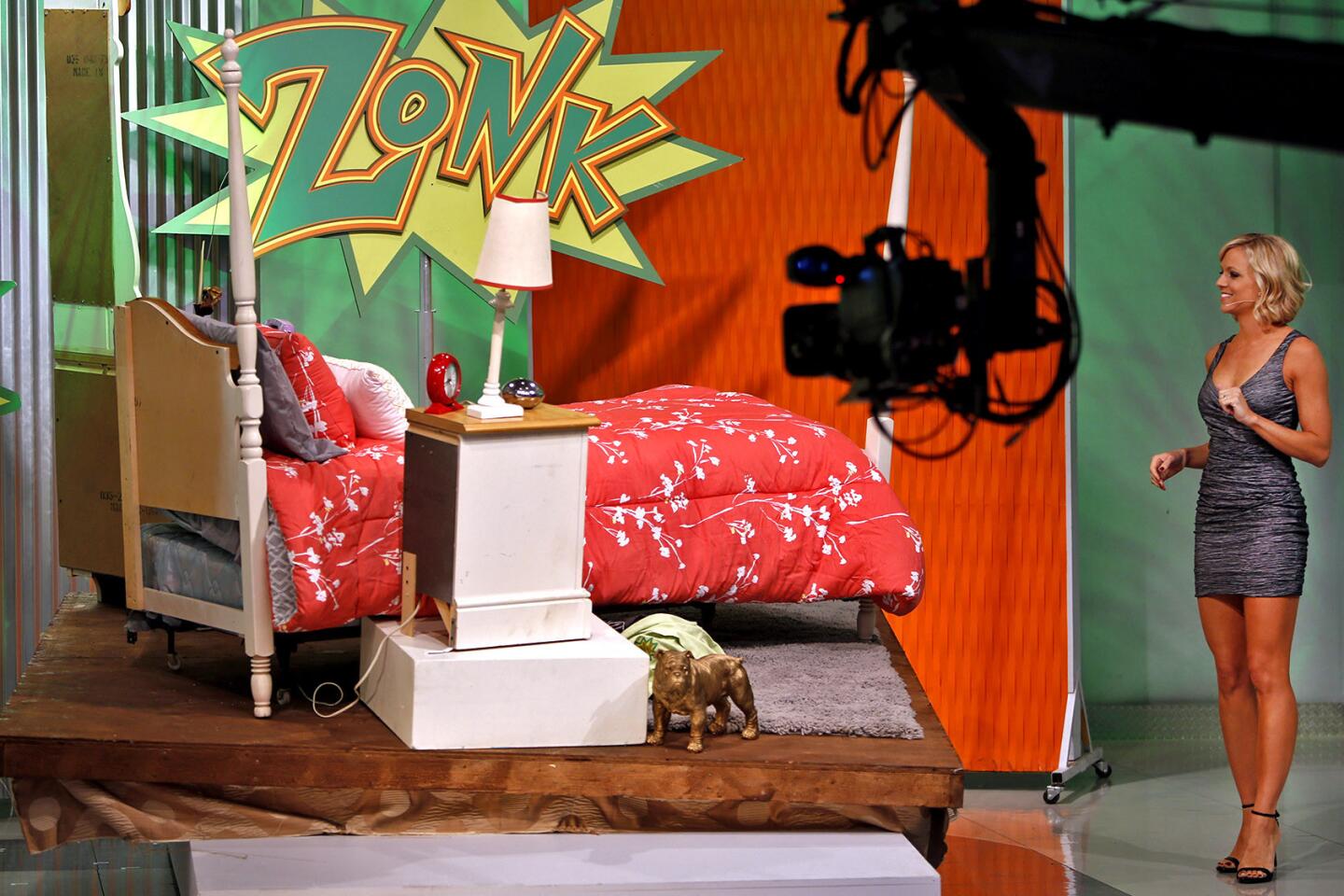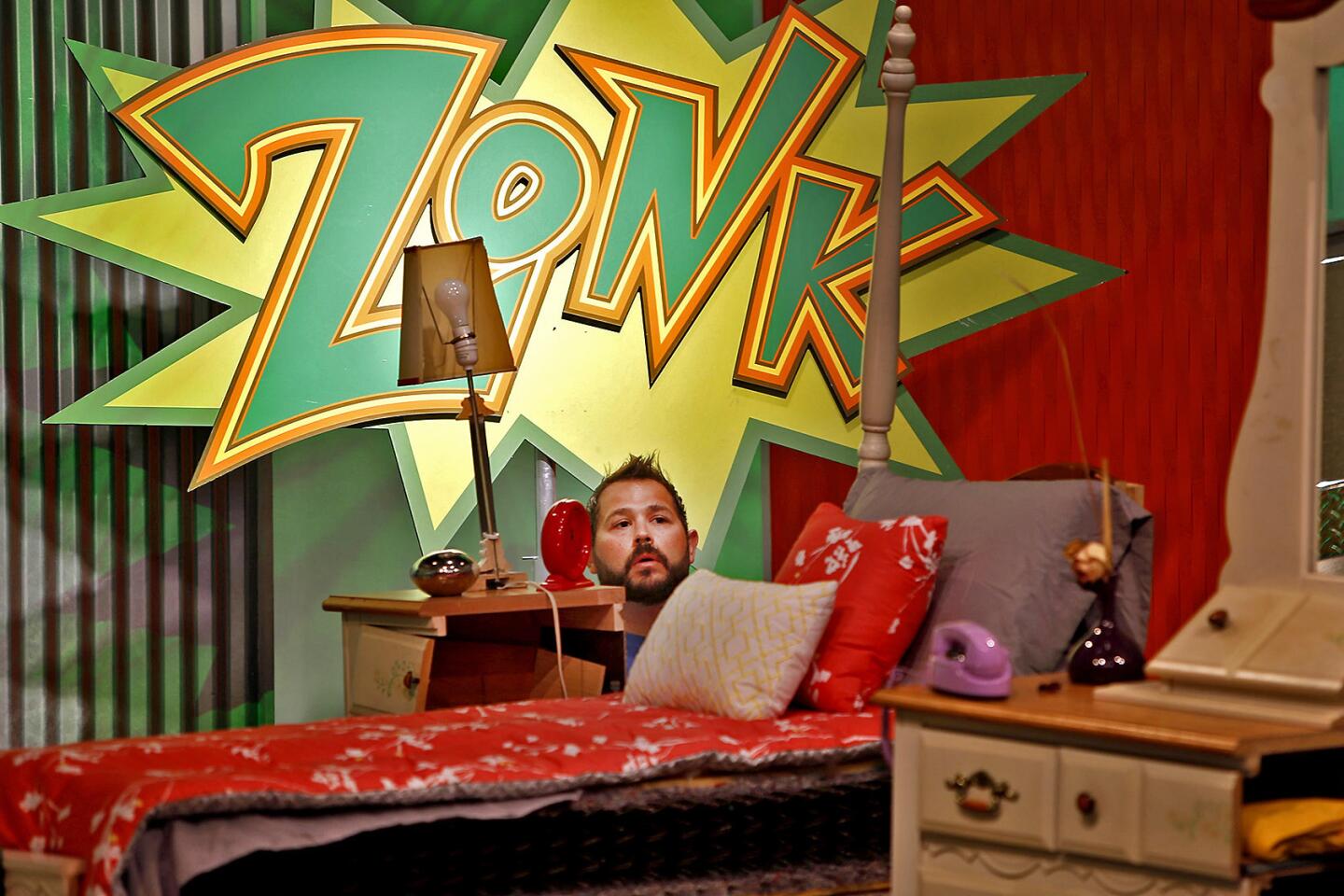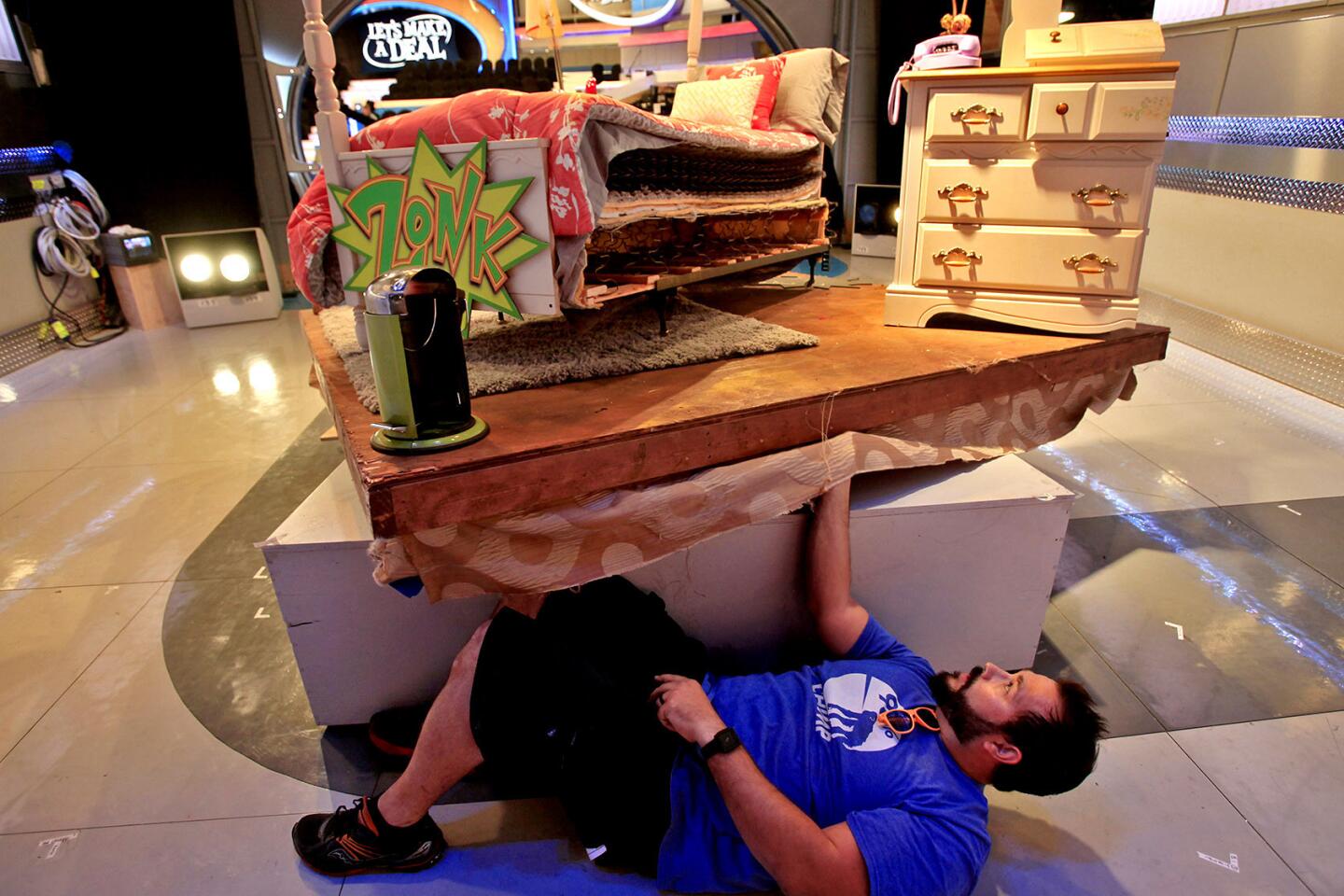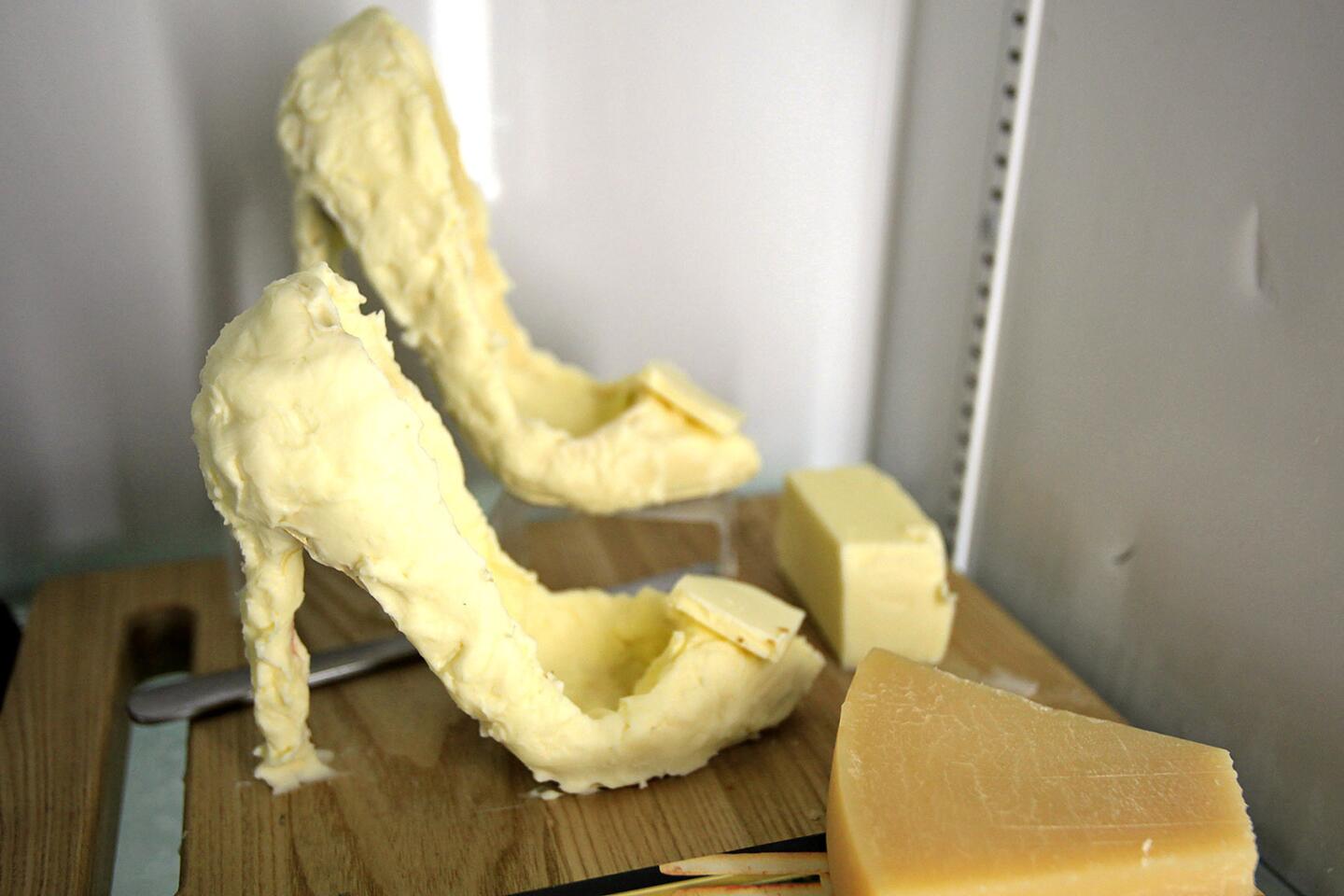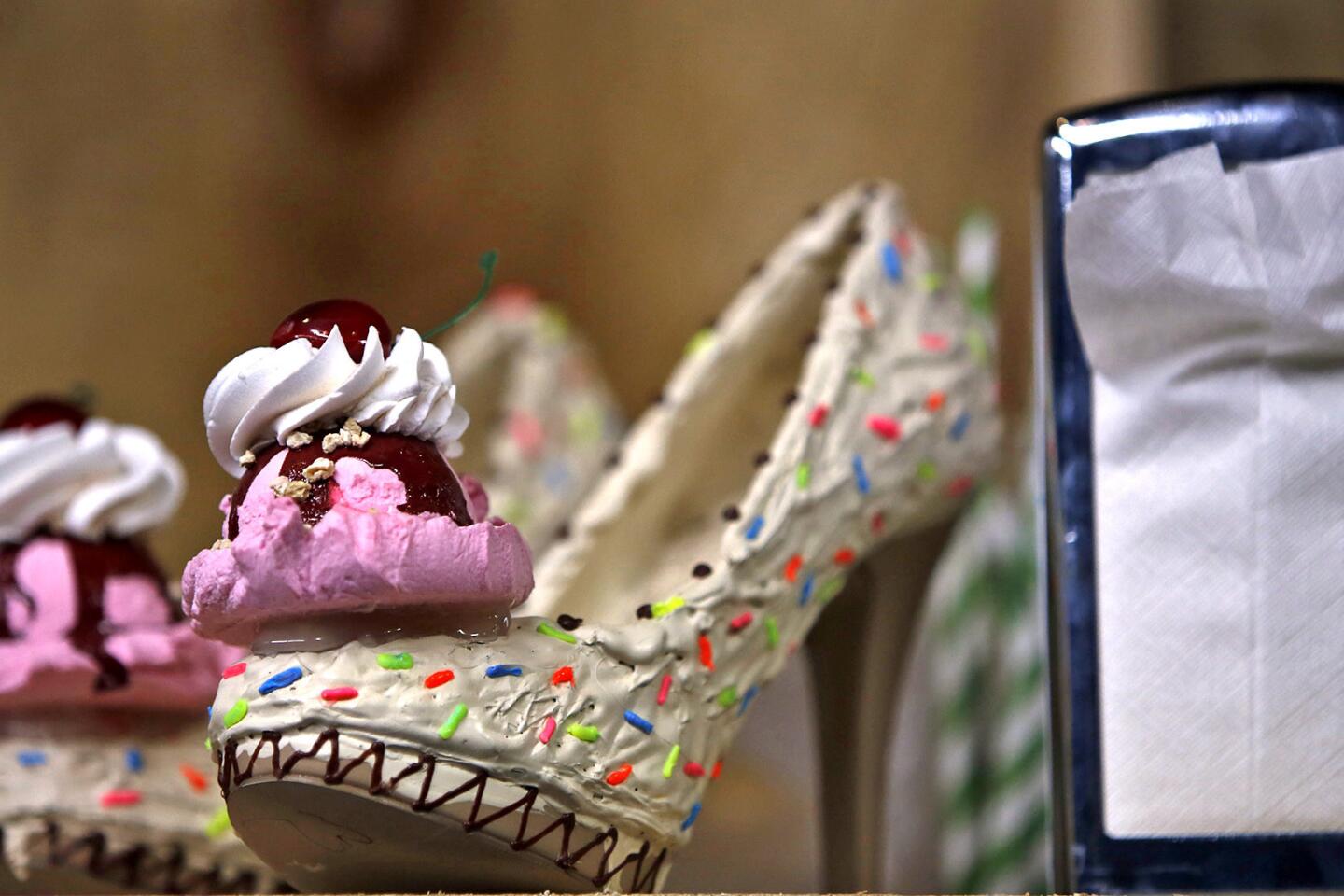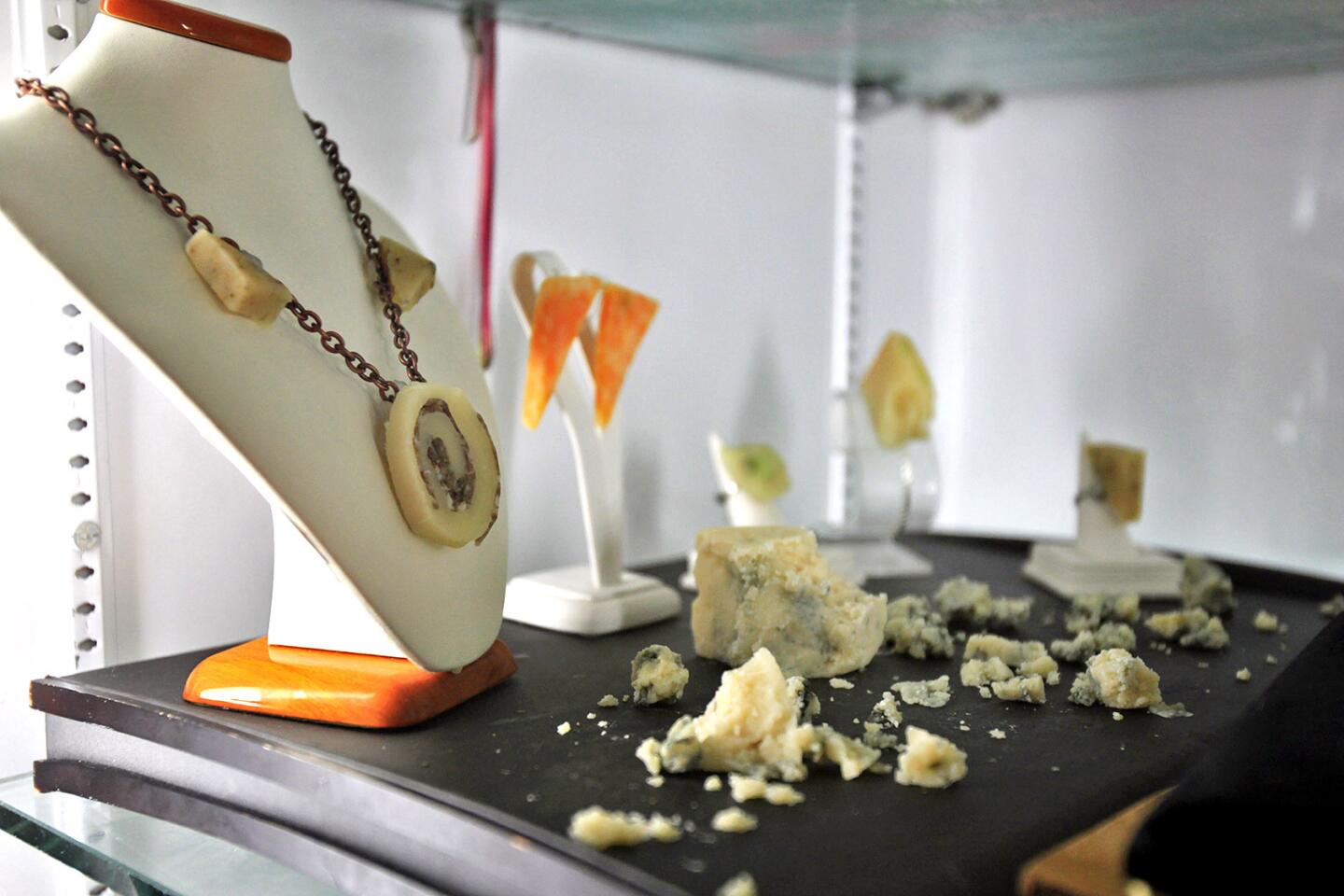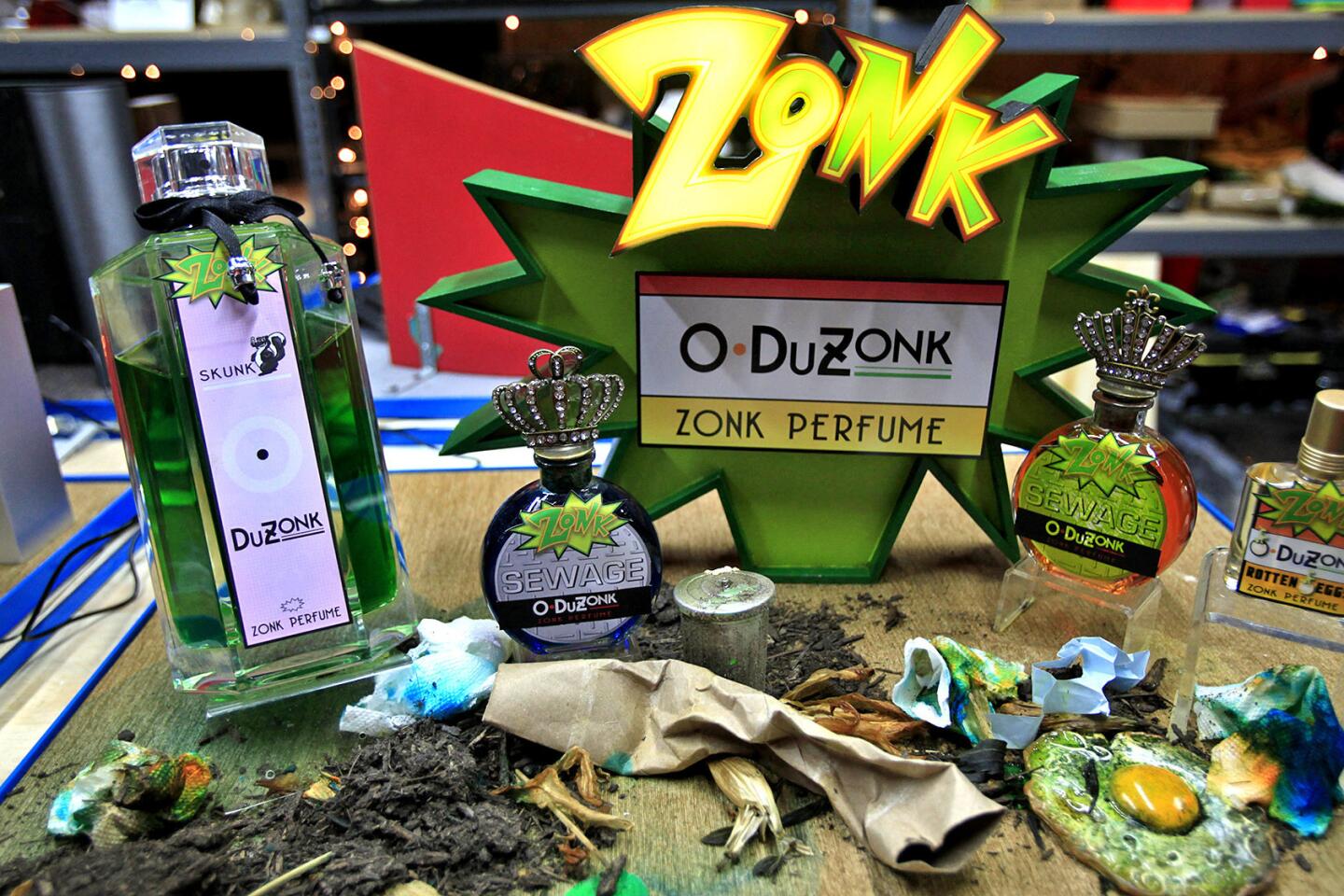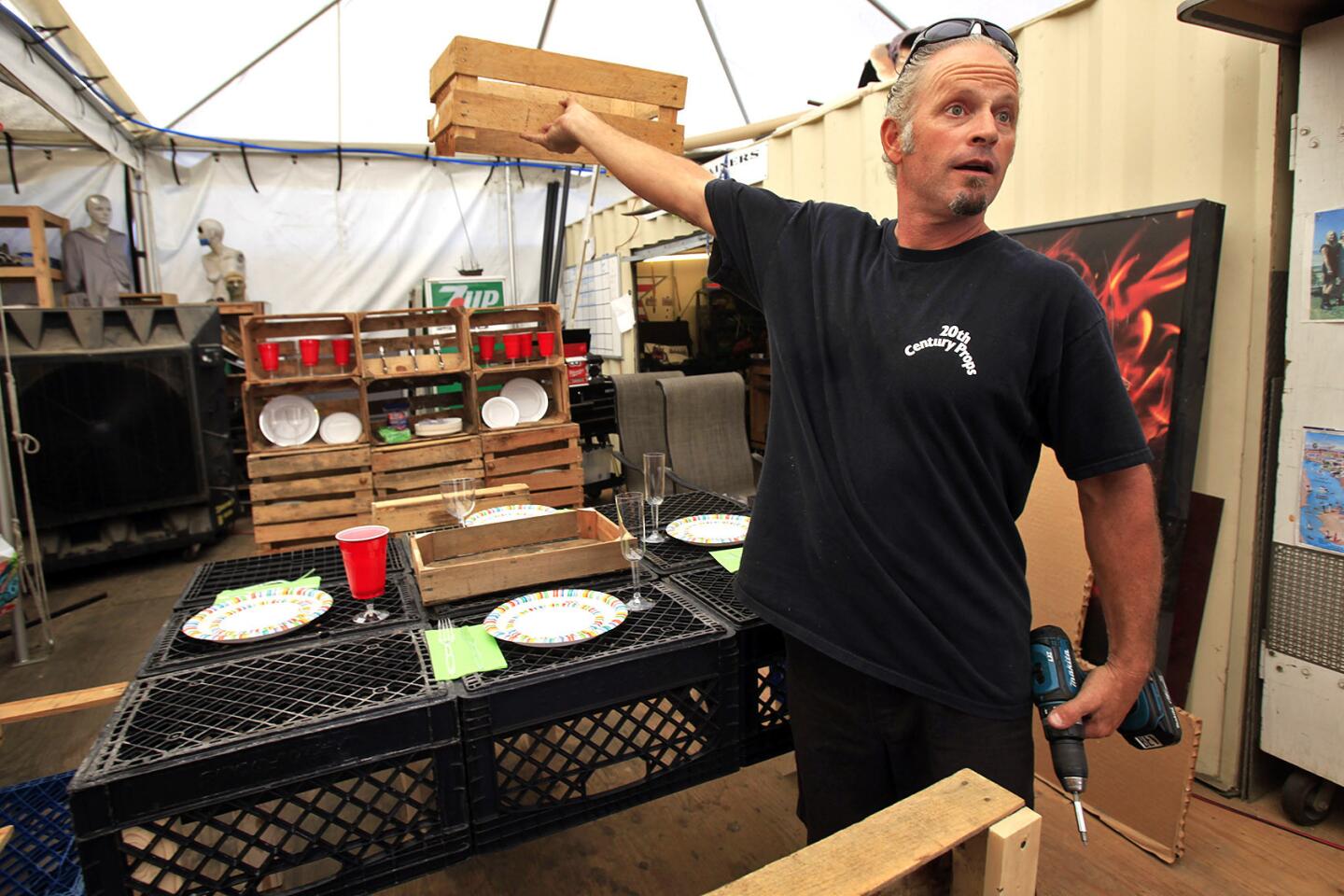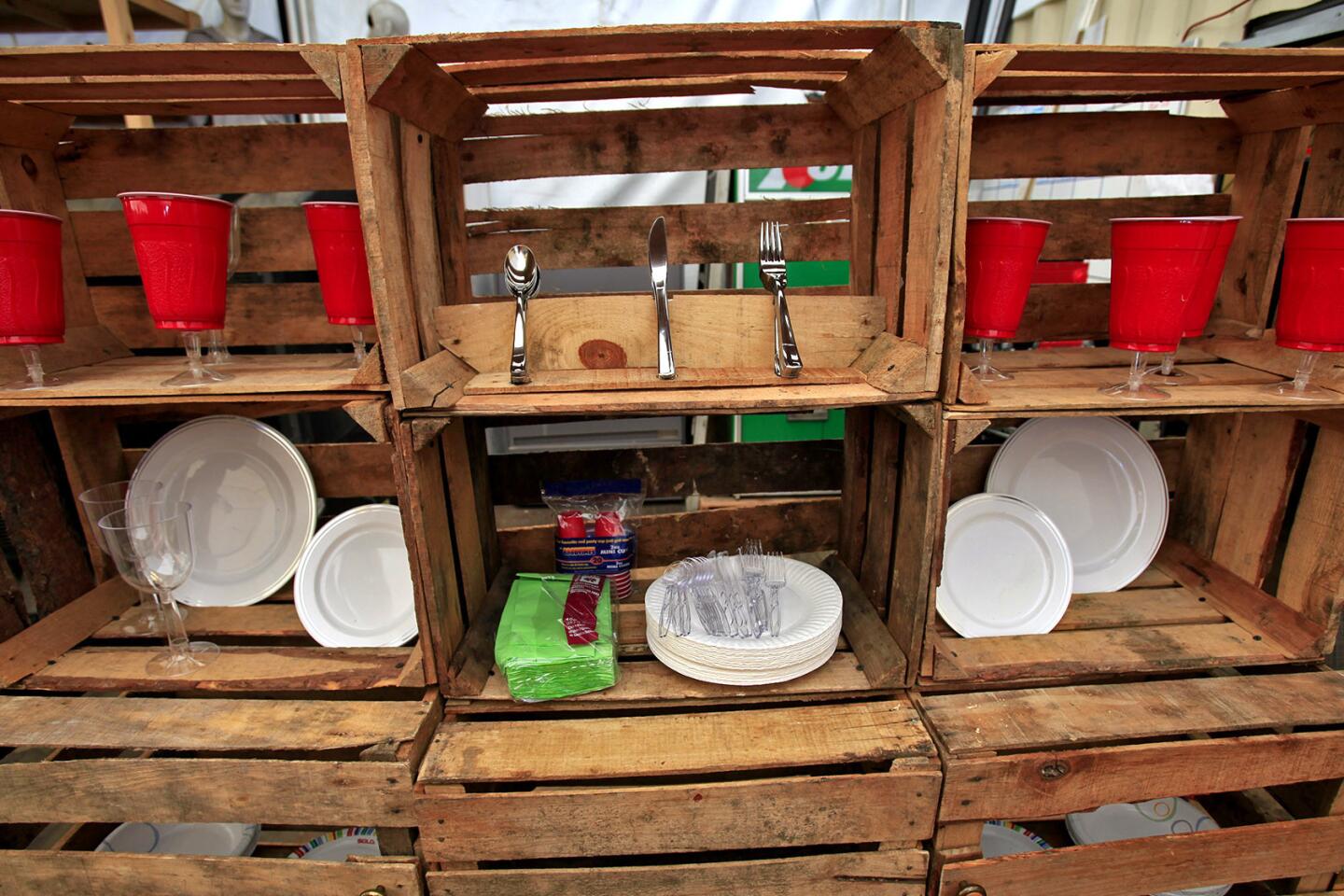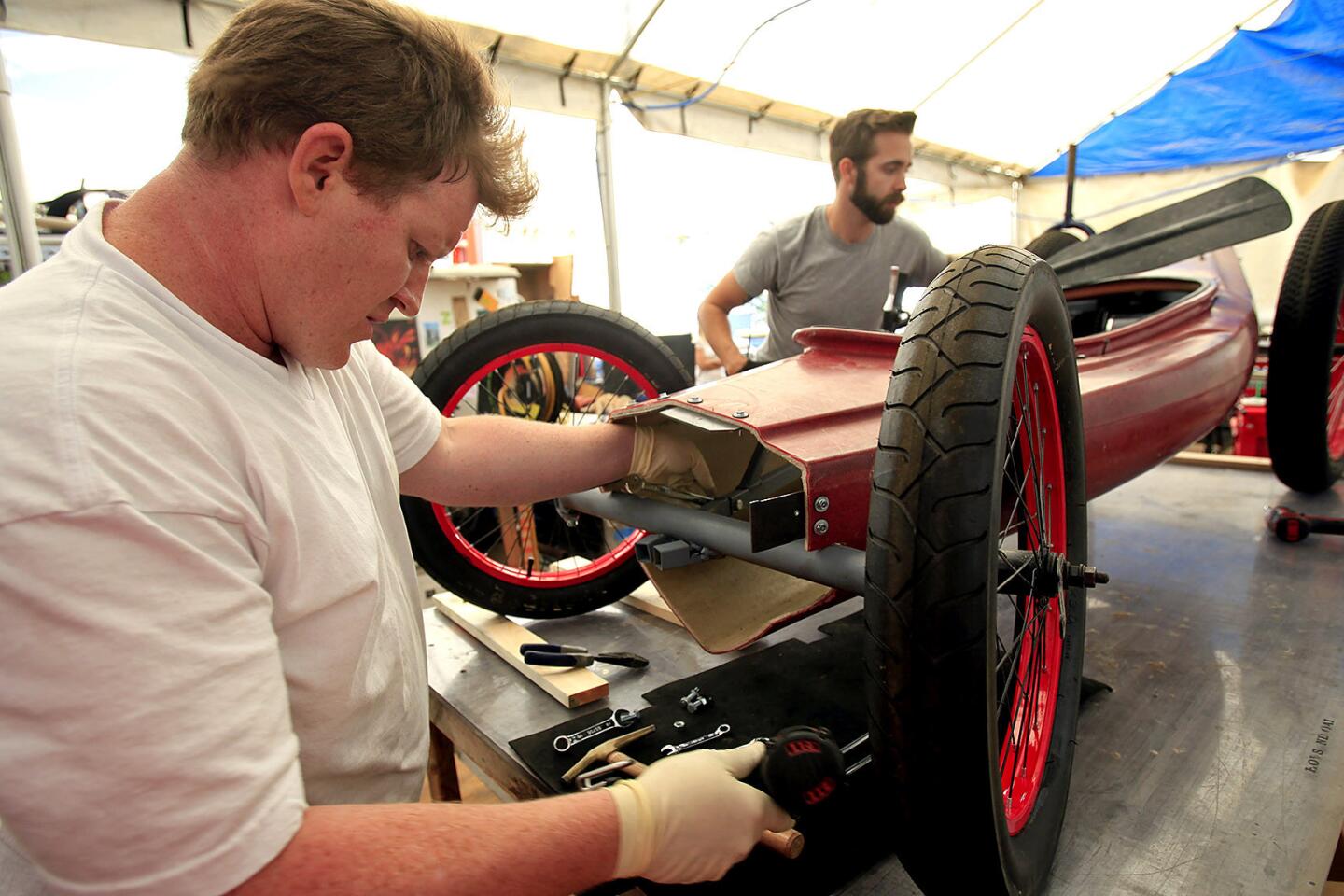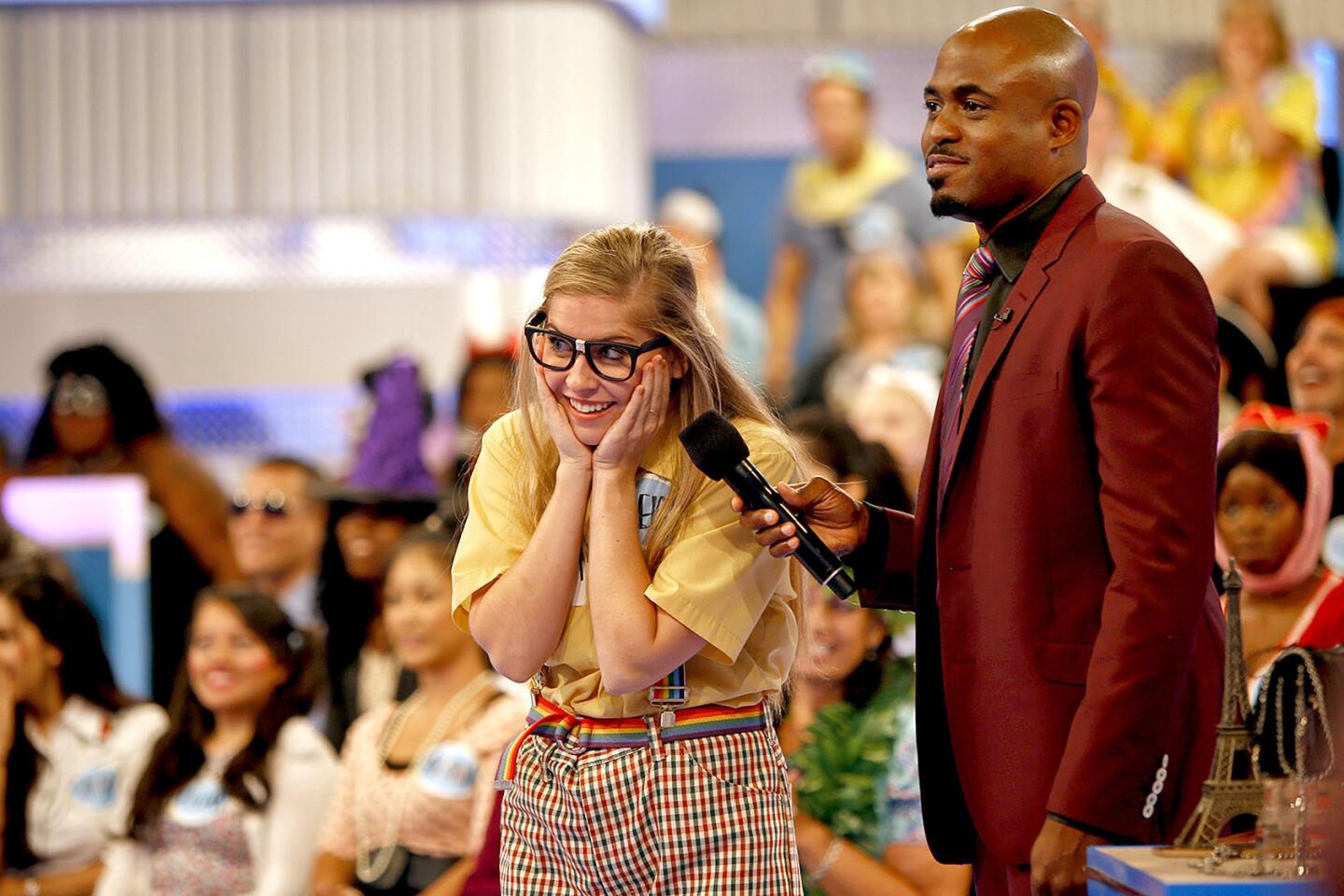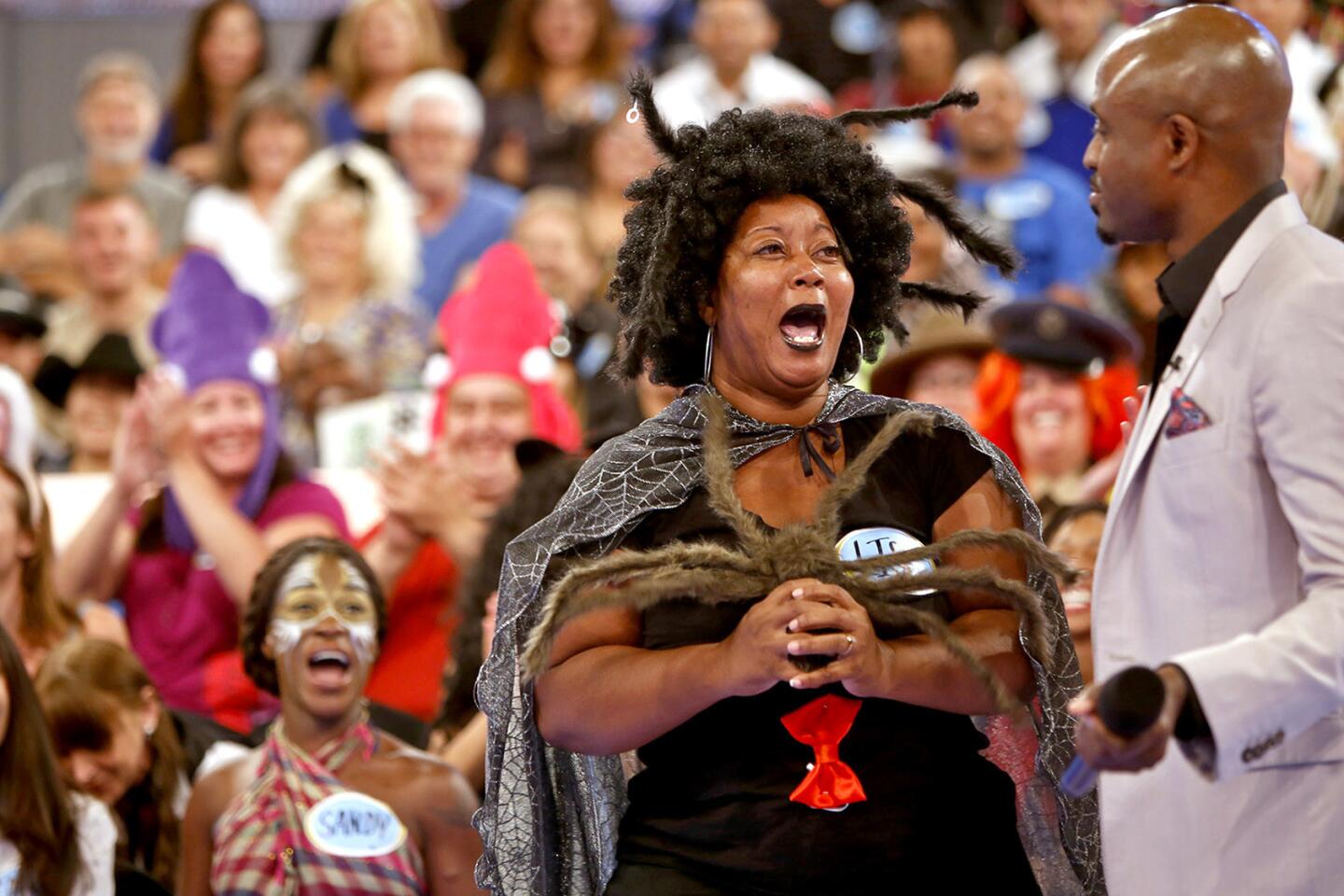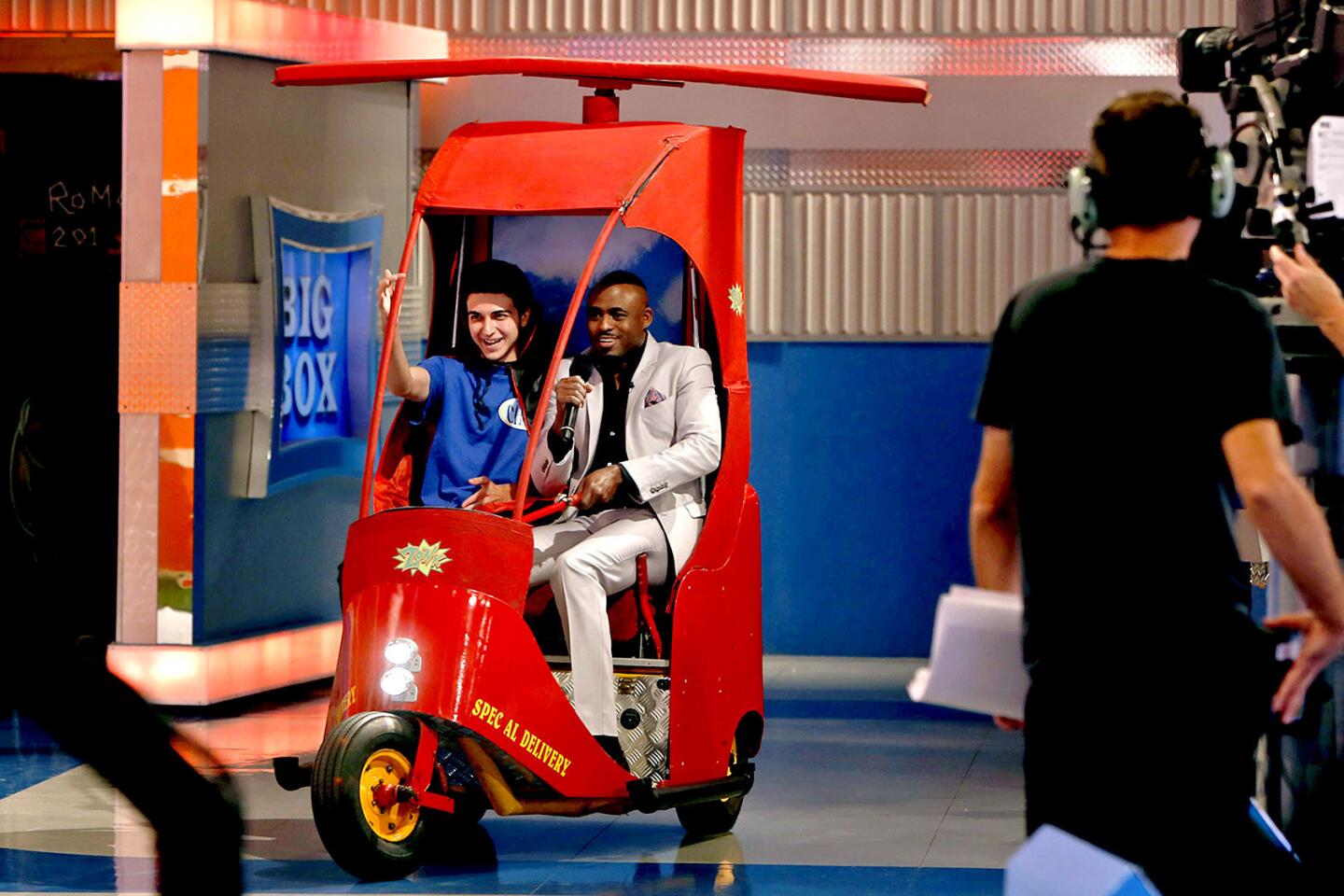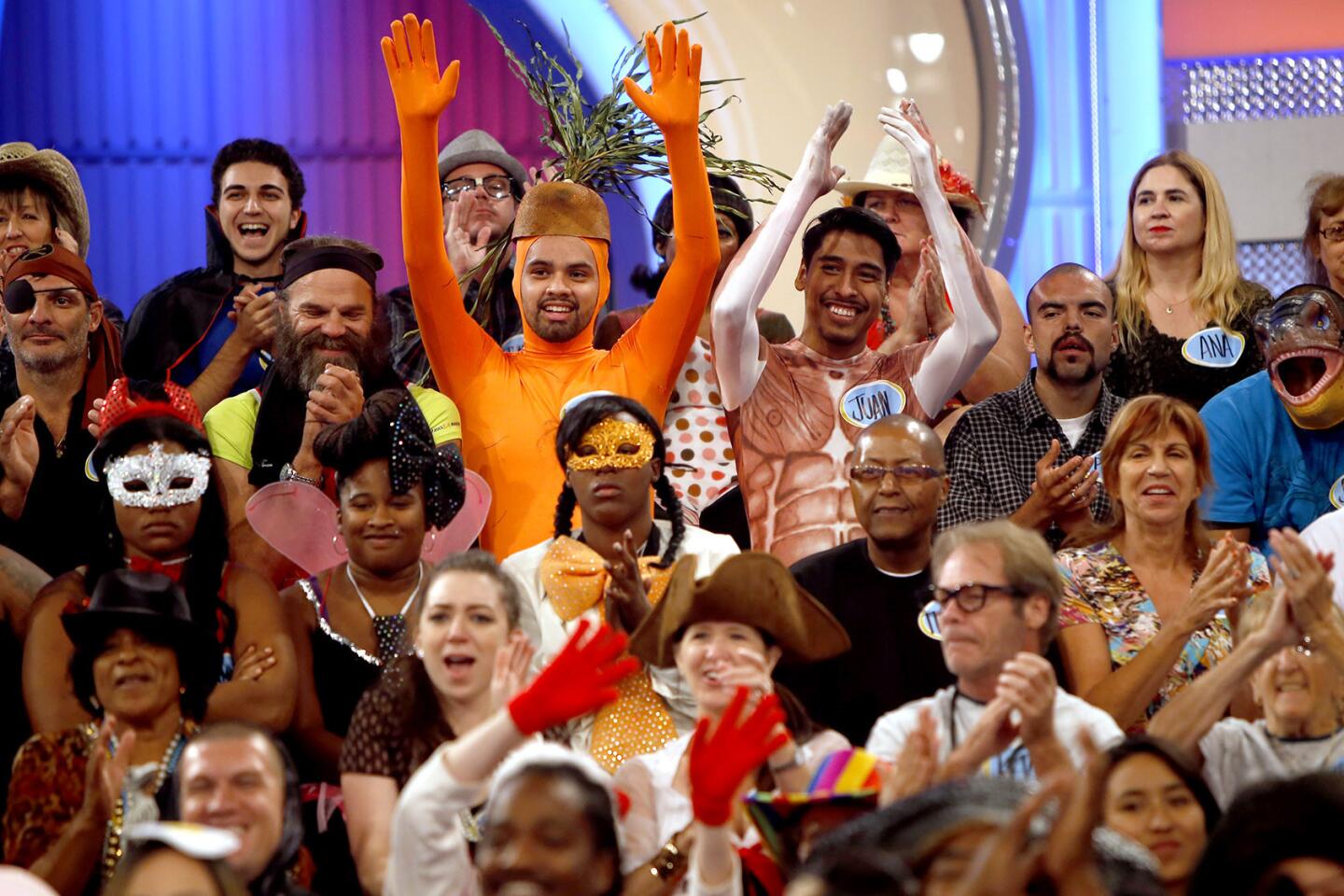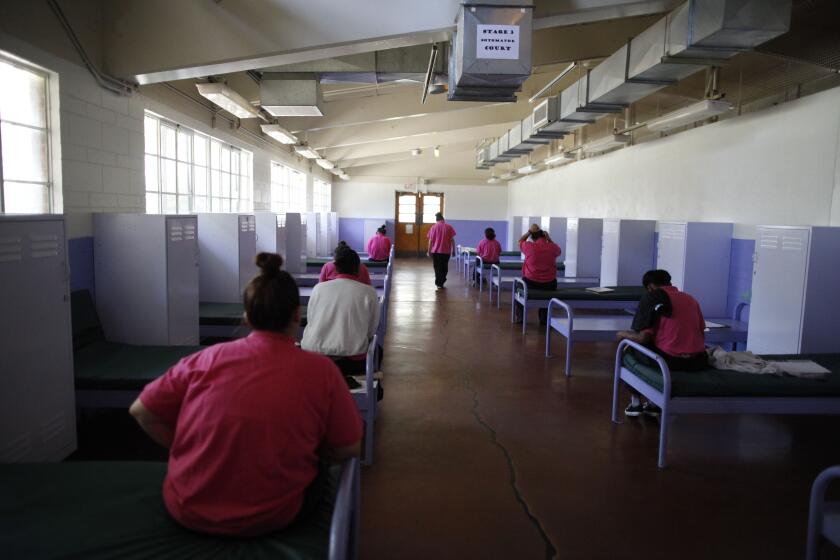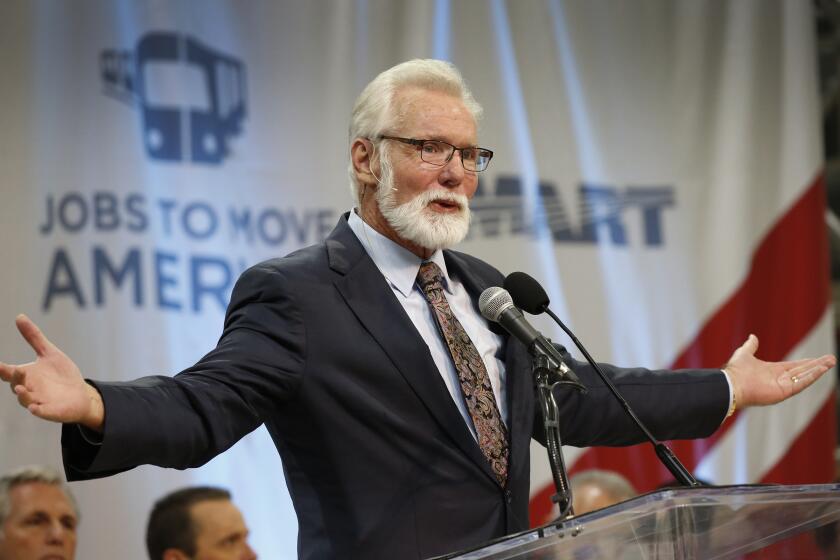Great Read: The mad scientists behind the zonk prizes on ‘Let’s Make a Deal’
- Share via
Imagine getting paid to make bacon jewelry, build a nacho cheese hot tub, cover lawn chairs in sod.
Five people in Los Angeles actually do. Carpenters, engineers, mad scientists — they create the zonk prizes for “Let’s Make a Deal.”
Reward and risk go hand in hand on the game show. Choose the right curtain, box or envelope and you could drive home in a new car. Choose the wrong one and find yourself staring at a ram truck — as in one shaped like a horned sheep’s head.
Host Wayne Brady makes contestants’ dreams come true. The zonk makers call themselves Dreamcrushers.
Not that they’re mean. These are cheerful guys, infectiously pleased with their labor. Their goal is to keep contestants laughing as they lose, even make them want to keep the zonks. (They can’t, though they might get $100 in exchange.)
Head zonk maker Timothy Feimster, 35, grinned early one recent morning as he prepared for two shows being taped back to back.
Just behind the set, pristine prize cars were being dusted and polished. Feimster, known as Jersey, was checking on his monster van.
That it had started out as a 1965 VW van was not immediately apparent.
The crew had transformed the van using wire mesh and spray-foam insulation. They’d carved its now-craggy, lumpy body and painted it metallic gray. Bug eyes went on the front and duct pipe arms on the sides, each topped with big, red Mickey Mouse-like hands.
At the push of a button, a long, red tongue would slide out past pointy teeth as smoke spewed from the monster’s giant open mouth.
“I always tell everybody I feel like Tom Hanks in ‘Big,’ because I get to play with toys all the time,” said Jersey, a bearded, boyish bear of a man who is on the job every day but Sunday.
Like the other zonk makers, John Bevan is a set dresser by trade and has worked on episodic TV shows and movies.
While that kind of work tends to pay more, Bevan said, he happily signs up for the game show’s seven-month season, commuting about 600 miles round-trip each week from Lake Havasu City, Ariz.
The 46-year-old spends more time under his parents’ roof in La Cañada Flintridge than he does with his wife and two children.
“I wouldn’t do it if it wasn’t fun,” he said.
::
At Sunset Bronson Studios in Hollywood, zonk making is a team sport.
Bevan is good at electrical work. Max Webb knows cars and welding. Ricky Bartlett jumps in on everything and makes the zonks look their best onstage. Brian Chrismon is the animation whiz.
Their toolbox includes a 3-D printer and a CNC machine for cutting custom-made parts. The crew takes on everything, from construction to staging.
How do crew members come up with their crazy creations?
For starters, there’s a prize each season for the best staff-suggested zonk. (This year: $200 and a new TV). Viewers also submit ideas online, which Jersey reads every day. Some (cactus swimwear) hold promise. Others (sausage dollhouse) not so much.
Then there’s Jersey himself, free associating or surfing the Internet. Burning Man has served him well, as have his childhood daydreams.
“I wanted it, so I built it,” he said of the giant red Radio Flyer wagon that sits on an outdoor lot. Nearby is the “car pool” — a pick-up truck with a swimming-pool bed, complete with diving board and water slide.
What does it take to be a zonk master? Jersey’s father was a teacher, his mother a bus driver. But each summer, the family left its Toms River, N.J., home to live the carnie life, racing pigs and skunks at fairs.
Is it any wonder, he said, that kooky ideas come naturally?
::
“Let’s Make a Deal” contestants come costumed. They jump up and down. But when the show first aired in 1963, women in dresses and men in suits sat politely in their seats.
In the pilot, host Monty Hall quizzed a couple on their knowledge of “each other’s worlds.” For cash, he asked the husband to identify flowers and the wife a hammer and level.
It may have been a different era, but booby prizes were present from Day 1. “They knew they had to put them in the show, because there would be no jeopardy otherwise,” supervising producer Chris Ahearn said of his predecessors.
Joke prizes soon became zonks, after a word in a comic strip. “They loved it and it stuck,” Ahearn said.
Go-to zonks in Hall’s day were typically alive, or old: a dusty Model T, four little lambs, a ratty raccoon coat.
In 2009, when the latest incarnation of the show began filming, junk was Jersey’s go-to too.
“It was damaging products, throwing dirt on things,” he said. “Then we took it to a whole new level of quirkiness.”
What makes a good zonk now? Something that riffs off a real prize. A pair of designer pumps carved out of butter. A bedroom set just like the real thing, only with half a bed, half a mattress, half a lamp, half a dresser.
What makes a great zonk? Something that Brady, announcer Jonathan Mangum and model Tiffany Coyne can play with onstage.
Anything ridable. Anything drivable. Bonus for a big surprise. Hence the pirate-ship car complete with a cannon that shoots Zonk T-shirts into the audience.
Jersey works with a zonk budget of $100,000 a season, and that has to cover 175 episodes.
So he scours Craigslist for golf carts and other used things he might need. Sometimes he tells the sellers his plans, sometimes not. “I got a baby grand piano from a woman who had taught 50 years on it. I was like, ‘Oh, it’s for a show,’” he said. “And then I cut it in half.”
As for the half he didn’t use, nothing gets thrown away. On three stages and in two warehouses, abandoned parts and old zonks wait their turn.
::
Maybe it’s poetic justice when the zonk makers get zonked. It happens pretty frequently, sometimes in the middle of a show.
The expensive animatronic donkey puppet’s mouth goes slo-mo when it’s supposed to move in sync with Mangum’s voice.
A fancy remote control shorts out, killing the special effects.
After Jersey checked on the monster van and staged the half-bedroom set, he walked to a workshop where his crew was busy building.
Members of the crew were trying to perfect a kayak bike with paddle steering, but on its first foray, the motor burned out. To replace it meant taking it apart.
They’d fallen a little behind and had to produce a new zonk for the next day. There weren’t enough milk crates for their first plan, a milk-crate kitchen, so they made a milk-crate dining set instead, supplemented by a hutch made from splintery produce boxes.
Back on the set, where taping was under way, a contestant named Chad had passed up a year of dance lessons and an undisclosed mystery prize to see what was inside the Big Box.
He’d wound up with a two-seater red helicopter car, on three wheels, with a propeller on top. Brady told Chad they’d take it for a spin.
Off they went, but they failed to find the brake. The zonk almost crashed into the sound booth.
“Let’s get out of here before the cops come,” Brady said, before calling out for Jersey.
The moment hadn’t gone as planned. But everyone was laughing, which really was the point.
Follow City Beat @latimescitybeat on Twitter and at Los Angeles Times City Beat on Facebook
More to Read
Sign up for Essential California
The most important California stories and recommendations in your inbox every morning.
You may occasionally receive promotional content from the Los Angeles Times.

